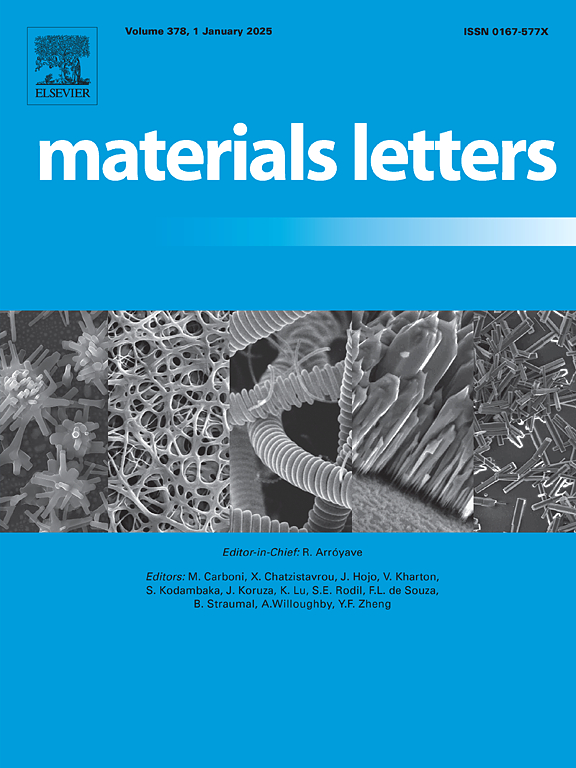Unveiling TWIP and TRIP plasticity mechanisms in AlCoCuNi high entropy alloy through molecular dynamics
IF 2.7
4区 材料科学
Q3 MATERIALS SCIENCE, MULTIDISCIPLINARY
引用次数: 0
Abstract
High entropy alloys are a new class of materials introduced in 2004. The use of computational tools to study and develop these alloys has recently gained significant attention. Among these tools, molecular dynamics (MD) simulation stands out as a powerful method for examining material behavior at the atomic scale. However, one of the primary challenges in MD simulations is the availability of reliable potentials that can accurately predict material behavior at the atomic level. In this study, the behavior of the AlCoCuNi high entropy alloy under uniaxial tensile testing was analyzed using MD simulations, employing a MD potential that developed for multicomponent systems. The results indicate that the single-phase FCC AlCoCuNi alloy is not stable after deformation, due to the formation of BCC nuclei under tension. Additionally, the alloy exhibits a high work-hardening capacity, as revealed by the observation of twinning-induced plasticity, transformation-induced plasticity, and dislocation formation. Finally, the findings suggest new methods for developing high entropy alloys using the currently developed potential, which has proven to be both effective and economical.
从分子动力学角度揭示AlCoCuNi高熵合金的TWIP和TRIP塑性机理
高熵合金是2004年引进的一类新型材料。使用计算工具来研究和开发这些合金最近得到了极大的关注。在这些工具中,分子动力学(MD)模拟作为一种在原子尺度上检查材料行为的强大方法而脱颖而出。然而,MD模拟的主要挑战之一是可靠的势的可用性,可以准确地预测原子水平上的材料行为。在这项研究中,使用MD模拟分析了AlCoCuNi高熵合金在单轴拉伸试验下的行为,采用了针对多组分系统开发的MD势。结果表明:单相FCC AlCoCuNi合金在拉伸作用下形成BCC核,变形后不稳定;此外,通过观察孪晶诱导塑性、相变诱导塑性和位错形成,合金表现出较高的加工硬化能力。最后,研究结果提出了利用目前开发潜力开发高熵合金的新方法,该方法已被证明是既有效又经济的。
本文章由计算机程序翻译,如有差异,请以英文原文为准。
求助全文
约1分钟内获得全文
求助全文
来源期刊

Materials Letters
工程技术-材料科学:综合
CiteScore
5.60
自引率
3.30%
发文量
1948
审稿时长
50 days
期刊介绍:
Materials Letters has an open access mirror journal Materials Letters: X, sharing the same aims and scope, editorial team, submission system and rigorous peer review.
Materials Letters is dedicated to publishing novel, cutting edge reports of broad interest to the materials community. The journal provides a forum for materials scientists and engineers, physicists, and chemists to rapidly communicate on the most important topics in the field of materials.
Contributions include, but are not limited to, a variety of topics such as:
• Materials - Metals and alloys, amorphous solids, ceramics, composites, polymers, semiconductors
• Applications - Structural, opto-electronic, magnetic, medical, MEMS, sensors, smart
• Characterization - Analytical, microscopy, scanning probes, nanoscopic, optical, electrical, magnetic, acoustic, spectroscopic, diffraction
• Novel Materials - Micro and nanostructures (nanowires, nanotubes, nanoparticles), nanocomposites, thin films, superlattices, quantum dots.
• Processing - Crystal growth, thin film processing, sol-gel processing, mechanical processing, assembly, nanocrystalline processing.
• Properties - Mechanical, magnetic, optical, electrical, ferroelectric, thermal, interfacial, transport, thermodynamic
• Synthesis - Quenching, solid state, solidification, solution synthesis, vapor deposition, high pressure, explosive
 求助内容:
求助内容: 应助结果提醒方式:
应助结果提醒方式:


